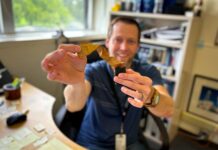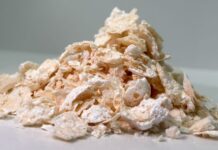A new hydrogen-rich compound may be a record-breaking superconductor
The material appears to transmit electricity without resistance at a relatively high temperature

Superconductors are heating up, and a world record-holder may have just been dethroned.
Two studies report evidence of superconductivity — the transmission of electricity without resistance — at temperatures higher than seen before. The effect appears in compounds of lanthanum and hydrogen squeezed to extremely high pressures.
All known superconductors must be chilled to function, which makes them difficult to use in real-world applications. If scientists found a superconductor that worked at room temperature, the material could be integrated into electronic devices and transmission wires, potentially saving vast amounts of energy currently lost to electrical resistance. So scientists are constantly on the lookout for higher-temperature superconductors. The current record-holder, hydrogen sulfide, which also must be compressed, works below 203 kelvins, or about −70° Celsius (SN: 12/26/15, p. 25).
The new evidence for superconductivity is based on a dramatic drop in the resistance of the lanthanum-hydrogen compounds when cooled below a certain temperature. One team of physicists found that their compound’s resistance plummeted at a temperature of 260 kelvins (−13° C), the temperature of a very cold winter day. The purported superconductivity occurred when the material had been crushed with almost 2 million times the pressure of Earth’s atmosphere by squeezing it between two diamonds. Some samples even showed signs of superconductivity at higher temperatures, up to 280 kelvins (about 7° C), physicist Russell Hemley of George Washington University in Washington, D.C., and colleagues report in a study posted online August 23 at arXiv.org. Hemley first reported signs of the compound’s superconductivity in May in Madrid at a symposium on superconductivity and pressure.
Read more: A record-breaking superconductor
Image courtesy of: sciencenews.org
















